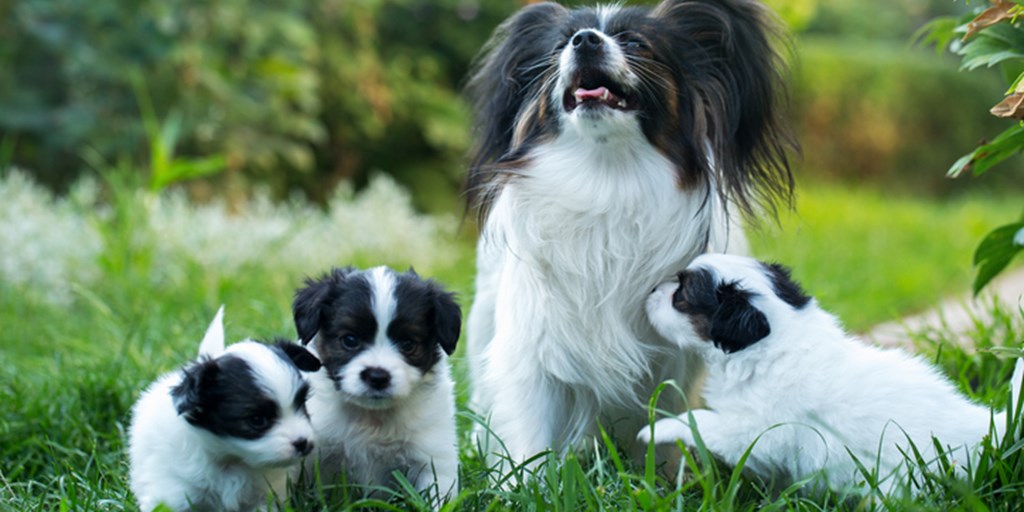Puppy food is specifically formulated to support the rapid growth and high energy needs of a puppy in his first year. However, your little furry friend isn’t going to be a puppy forever.
At some point, every puppy needs to make the switch from puppy food to adult dog food. Adult food is designed to help maintain your dog’s good health through his prime, but it can be tricky to figure out exactly when your precious puppy is ready for some big boy food. To help, we’ve put together some tips on when and how to switch your dog to adult food.
When is the Right Time to Switch to Adult Dog Food?
Determining when to make the switch from puppy to adult dog food depends on your puppy’s size and breed, as well as his metabolism. Simply put, small and large breed puppies develop at different rates, meaning that some dogs will make the switch to adult food at different life stages. At Bil-Jac, we agree with our friends at VetInfo.com and recommend the following guidelines:
- Smaller breeds (up to 20 pounds when full grown) mature more quickly and can be switched at about 9 months to 1 year
- Medium breeds (20 to 50 pounds) can be switched at around 1 year of age
- Large and giant breed dogs (50-plus pounds) can transition anywhere from 1 year to 18 months
Of course, “one to two years” is quite a wide range of time. Every dog is different, so keep an eye on how much food your dog eats. Skipping meals or leaving some food behind is one notable sign that your furry friend is ready for a switch. If you notice that your best friend is regularly leaving some of her puppy food behind in the bowl, it’s probably time to make the jump to an adult formula.
Your dog’s body condition can also help you figure out when it’s time to switch to adult food. Since puppy formulas are designed to support rapid growth, once a puppy is first weaned, splitting up meals info three feeding a day si recommended.
By the time your puppy is 6 months old, you can split the amount of food he needs a day into two feedings. When your puppy is no longer growing, or is starting to show signs that he’s putting on some extra weight, he may be ready to move on to a less calorie-dense adult formula.
How to Make the Switch
When it’s time to switch your puppy to adult food, you’ll want to identify the right food for your four-legged friend and then make it an easy transition from puppy food to an adult formula.
Finding the adult right food
Not all pet food is made the same way. When it comes to finding the right formula, look for a food that is gently cooked and highly digestible. A slow-cooking process, like the Bil-Jac Nutri-Lock cooking method, helps to protect the key nutrients your dog needs his daily diet.
Dry foods that are cooked quickly in large batches at high temperatures and pressure, the way most dog foods are processed, can have nutrients damaged in the cooking process. In turn, your furry friend could suffer from an upset stomach and even loose stools.
It’s also good to maintain some consistency with your food choices. If you’ve been feeding your puppy a super-premium puppy food like Bil-Jac, it’s just as important to feed him a super-premium adult food as well.
You’ll also want to match your dog’s size with the right formula. Dogs don’t require a breed-specific dog food, but their size does make a difference in their metabolism. As such, you’ll want to select a high-quality dog food made for large breeds, small breeds, or more average-size dogs to match your particular pooch.
Making the switch
The amount of time it takes to transition from puppy to adult dog food depends on what you plan to feed your dog. When your dog is ready to switch to adult food, no transition time is needed if you are moving from Bil-Jac Puppy Food to Adult Food. If you are switching from one brand to another, you’ll want to take some time to ease your furry friend into a new kibble.
Start by adding a small amount of the new adult formula to your dog’s puppy food. Every couple of days, increase the amount of the adult formula until your best friend is completely switched to the new food. This process will help your dog get used to this new food over time. The whole process can take a week or so, but eventually your furry friend will be completely switched over to the new formula.
Time Flies When You’re with Your Furry Friend
,

